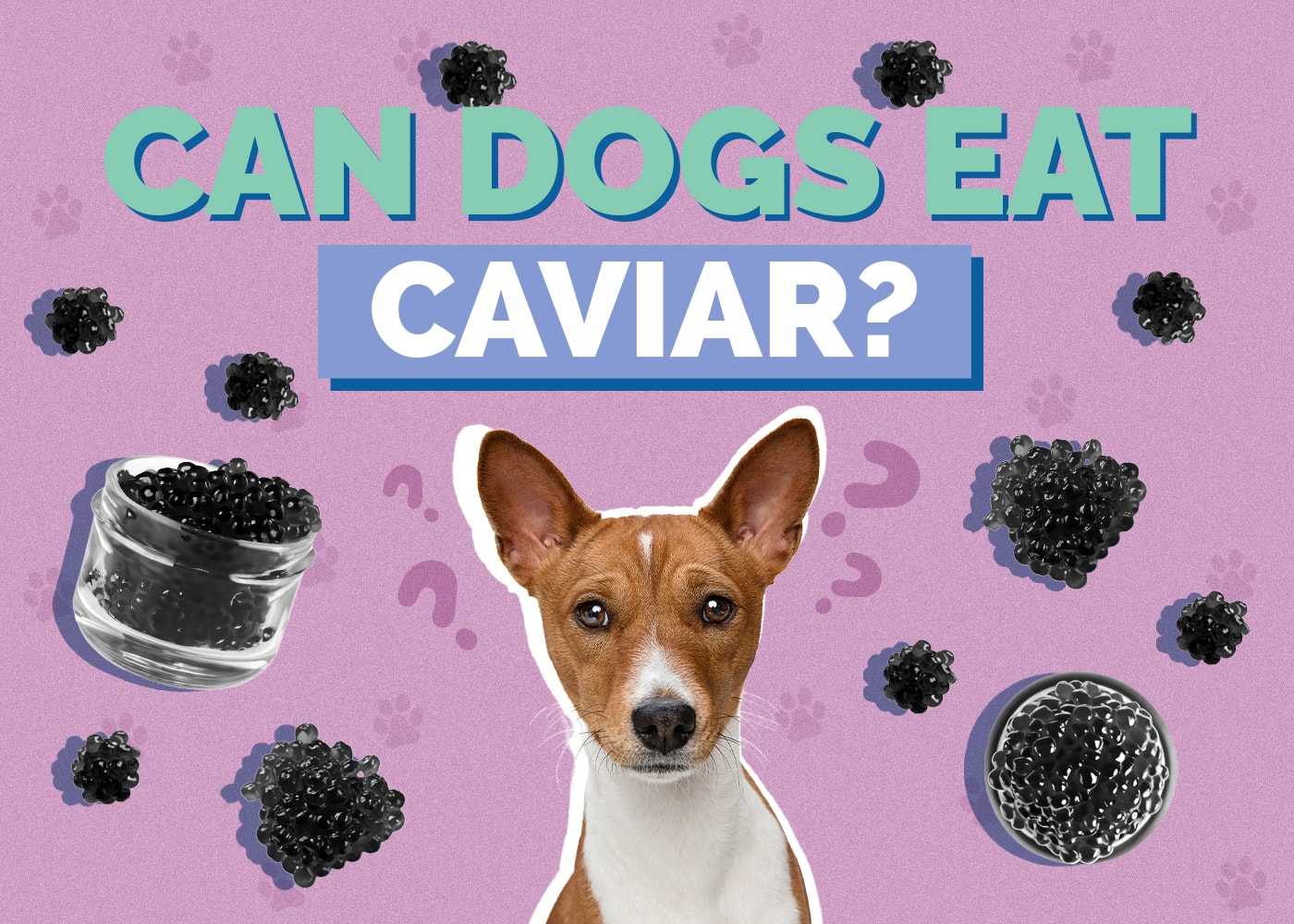Can Dogs Eat Caviar? Vet-Approved Facts & FAQ
By Jessica Kim
Updated on

Caviar, or fish roe, is a popular delicacy that people across the world enjoy eating. If you want to share this savory food with your dog, make sure to give it in moderation. While caviar isn’t toxic to dogs, it can become harmful if it’s eaten in large quantities.
Caviar has some health benefits along with some health risks. So, before you feed it to your dog, make sure that you’re well aware of how it can affect your dog’s health.
What Is Caviar?
Caviar is fish eggs or roe, and it’s often harvested from fish belonging to the sturgeon family. However, you can find caviar from other fish, like paddlefish, salmon, trout, whitefish, carp, and steelhead.
Caviar can be served fresh, but the ones that you receive in cans and are more likely to eat at home are cured in a saline solution. You can eat caviar on its own, but it’s often served with other ingredients and a part of an appetizer or bigger meal.

Health Benefits of Caviar for Dogs
Dogs can safely eat small quantities of caviar. Caviar comes with several health benefits. First, it’s an excellent source 1 of vitamin B12, which helps with the development and functioning of the nervous system and the production of red blood cells.
Caviar also contains vitamins A, D, and E and small amounts of calcium. It’s a great source of omega-3 fatty acids, which is a common nutrient incorporated in dog food and supplements that promote skin and coat health.
Because caviar contains omega-3 fatty acids, it may also help improve brain health. It can help reduce inflammation that affects cognitive functioning and memory. Omega-3 fatty acids may have links to depression 2 as studies have found that people with depression are also likely to have a deficiency in omega-3 fatty acids.
Another benefit of omega-3 fatty acids is that they can support the immune system and promote heart health. They may help with lowering blood pressure and stabilizing blood cholesterol levels.
The combination of omega-3 fatty acids and selenium in caviar can help reduce inflammation 3 and protect the skin, intestines, and lungs from bacterial infections. They can also help repair white blood cells and improve the body’s immune responses.

Health Risks of Caviar for Dogs
Unfortunately, the health risks of caviar may outweigh the benefits for dogs. First, caviar has a lot of cholesterol and calories. So, it’s probably not the best option for dogs that are overweight, obese, or require weight management. It also contains a lot of sodium, which has links to raising blood pressure 4.
Caviar also has low levels of mercury. Since it’s often served in small amounts, it’s not too much of an issue. However, it’s not safe for pregnant and nursing dogs to eat. Though rare, caviar can also cause food poisoning, especially if it hasn’t been stored properly.
Lastly, caviar is a luxury item that can cost anywhere from hundreds to tens of thousands of dollars. Dogs will not distinguish the differences between caviar and other seafood. So, they’ll be perfectly happy munching on a salmon-based dog treat and won’t feel like they’re missing out on some caviar.
Conclusion
Caviar should only be served as a treat for special occasions. Some dogs may enjoy the briny flavor, while others may want to pass on it. Since it’s not a food that has outstanding health benefits, there’s no harm in letting your dog pass up on it. There are plenty of other seafood-based treats and snacks that dogs can enjoy that are much more nutritious and safer for them to eat.
Featured Image Credit: Miroslavik, Pixabay











